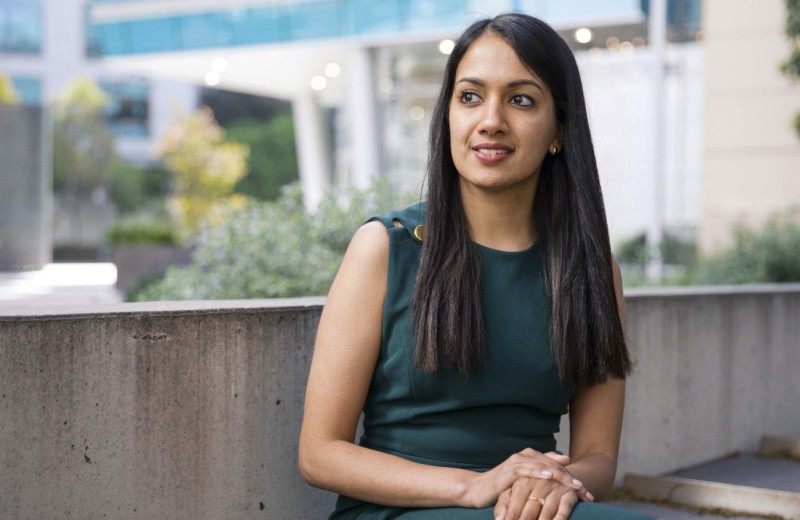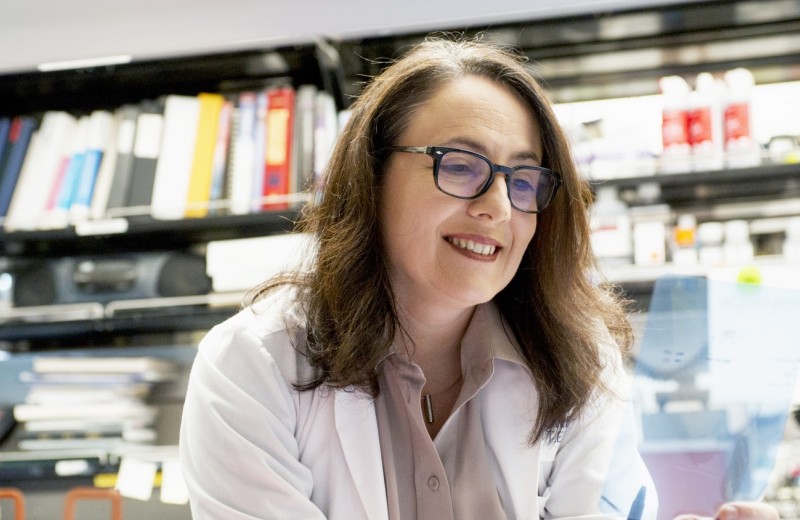Gladstone NOW: The Campaign Join Us on the Journey✕
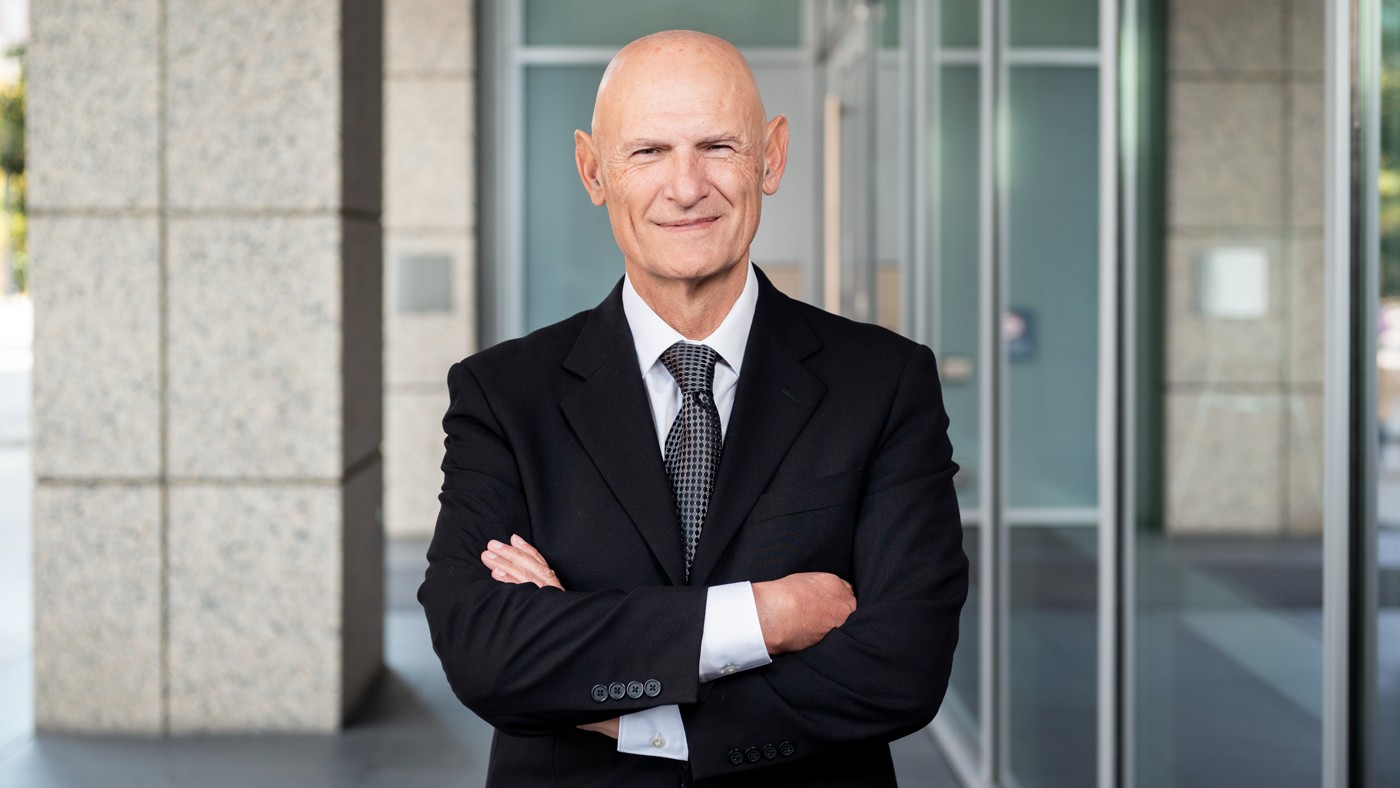
The recipient of the 2022 Ogawa-Yamanaka Stem Cell Prize, Juan Carlos Izpisua Belmonte is turning back the clock on old and sick cells.
Aging is inevitable. As we live our lives, our cells accumulate DNA mutations and other chemical changes that may cause disease and, eventually, death. Still, generation after generation, our species endures. Adults produce eggs and sperm with none of the cellular signs of age, and our offspring typically begin life with a clean slate.
If the countdown on aging resets whenever a baby is born, might it be possible to reset the cellular clock in other ways? Perhaps, say, in aging cells of the heart, liver, or lungs?
Juan Carlos Izpisua Belmonte, PhD, believes the answer is yes. For the past decade, his team has been rejuvenating aged and diseased cells in petri dishes and in mice, demonstrating broad promise for improving treatment of age-associated diseases.
“We are creating methods to essentially make cells a little bit younger,” Izpisua Belmonte says. “Younger cells are able to cope much better with mutations or other stress challenges. I am optimistic that we will soon be able to treat certain diseases by rejuvenating disease-affected cells.”
This work has now earned Izpisua Belmonte the 2022 Ogawa-Yamanaka Stem Cell Prize, awarded by Gladstone Institutes and supported by Cell Press. Established in 2015 by the late Hiro and Betty Ogawa, the award also honors Gladstone Senior Investigator Shinya Yamanaka, MD, PhD, who made a Nobel prize-winning discovery that would forever change the field of regenerative medicine.
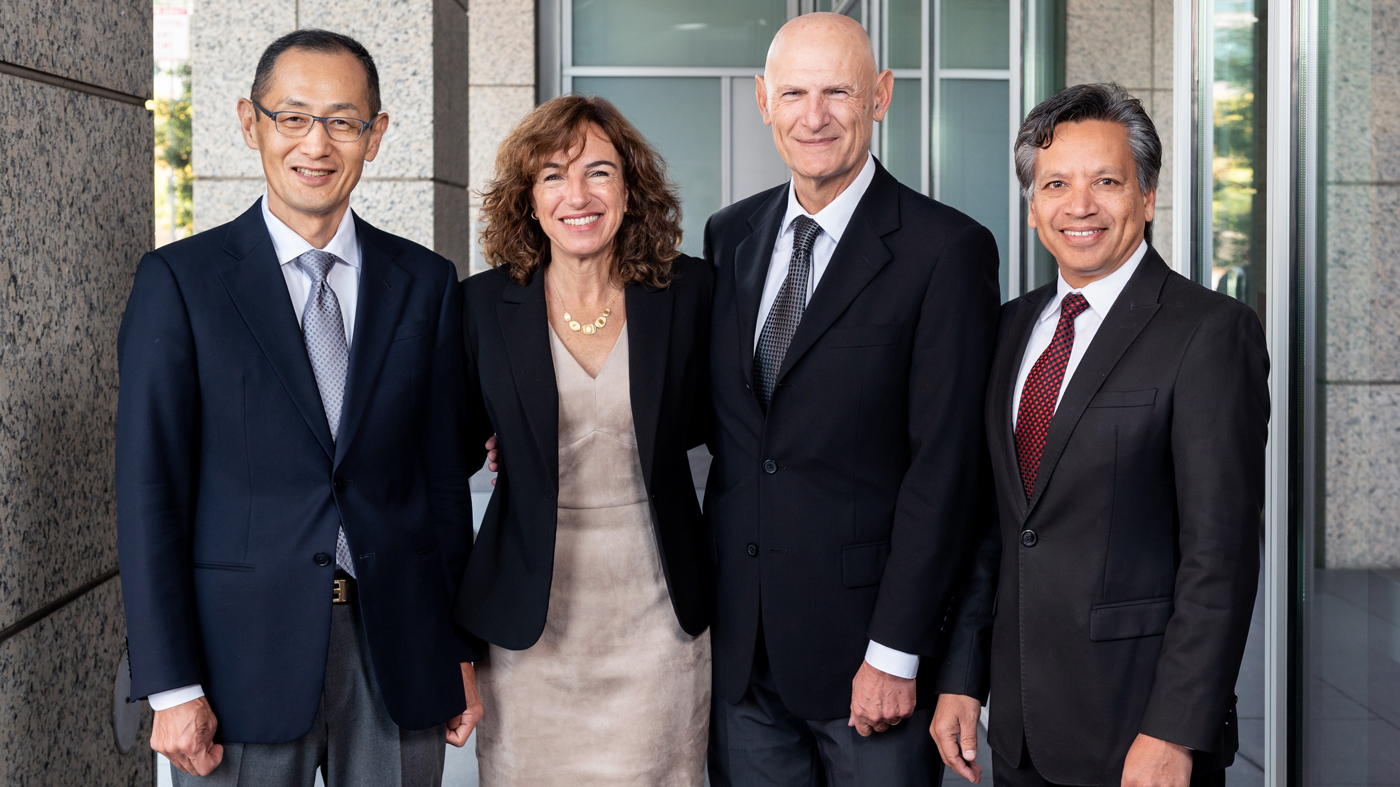
From left to right: Shinya Yamanaka, Concepcion Rodriguez Esteban, Juan Carlos Izpisua Belmonte, and Deepak Srivastava before the presentation of the 2022 Ogawa-Yamanaka Stem Cell Prize at Gladstone.
Yamanaka showed that applying just four proteins to adult human skin cells can transform them into stem cells resembling those of an embryo. Now, Izpisua Belmonte is adding smaller doses of these proteins in short pulses to diseased cells to reprogram them into slightly younger states, with the goal to restore health.
“We chose to recognize Juan Carlos for his groundbreaking contributions to cellular rejuvenation and his intent to advance his findings to the clinic,” says Deepak Srivastava, MD, president of Gladstone and chair of the prize’s selection committee. “His work holds great promise to treat disease and could one day extend the number of healthy years in people’s lives.”
Izpisua Belmonte received the award, along with an unrestricted prize of $150,000 USD, during a ceremony held at Gladstone in San Francisco in November 2022.
A Career Rooted in Big Questions
Izpisua Belmonte grew up in the countryside in the southern Castilla-La Mancha region of Spain. His family often needed him to help at home, so he could not attend school regularly until the age of 16. But even as a young child, he was already fascinated by living things.
“Every winter, the world was so quiet,” says Izpisua Belmonte. “But when spring came, all of a sudden, the plants, flowers, animals exploded with life, making eggs, releasing seeds. I wondered, where does life come from? Where do we come from? I saw other kids with different lives from mine and wondered where are we headed, and what is it all for?”
He ultimately decided to tackle these rather philosophical questions from a more practical perspective, earning his PhD in biochemistry and pharmacology from the University of Bologna and the University of Valencia.
“For the first phase of my work, I focused on embryonic development, working out how stem cells in an embryo transform at a cellular and molecular level to create all the different tissues and organs in our bodies,” says Izpisua Belmonte.
“Using human embryos grown from egg and sperm for medical purposes raises serious ethical concerns. But what if we could take a single adult cell, reprogram it, and grow a synthetic embryo that could then be used for transplantation of cells, tissues, or organs?”
In one early success during a postdoctoral position at the European Molecular Biology Laboratory in Heidelberg, Germany, he contributed to the major discovery that a family of genes known as HOX genes, originally identified in fruit flies, also plays a key role in determining the basic body structure of vertebrates.
After a second postdoctoral position at the University of California, Los Angeles, Izpisua Belmonte joined the Salk Institute for Biological Studies in 1993, where he continued to pioneer advances in developmental biology. Eventually, his fascination with how life begins was mirrored by a new interest in how life degenerates.
“About 15 years into my career, I began to feel strongly that what we were learning about the first stages of life could somehow be repurposed to try and delay the progression of disease that happens later in life,” he says. “This is where the work of Shinya Yamanaka came to light for me.”
Around that time, Yamanaka made his pivotal discovery that adult skin cells can be reprogrammed to an embryonic state. Known as induced pluripotent stem cells (iPS cells), these cells can then be coaxed into becoming any kind of cell in the body.
Yamanaka’s innovation launched the field of regenerative medicine into a new, prolific era.
Izpisua Belmonte joined other researchers in exploring whether iPS cells could be used to grow healthy cells and miniature versions of organs, called organoids, that could one day help treat disease. He developed novel strategies for converting stem cells into other cell types and for growing kidney organoids.
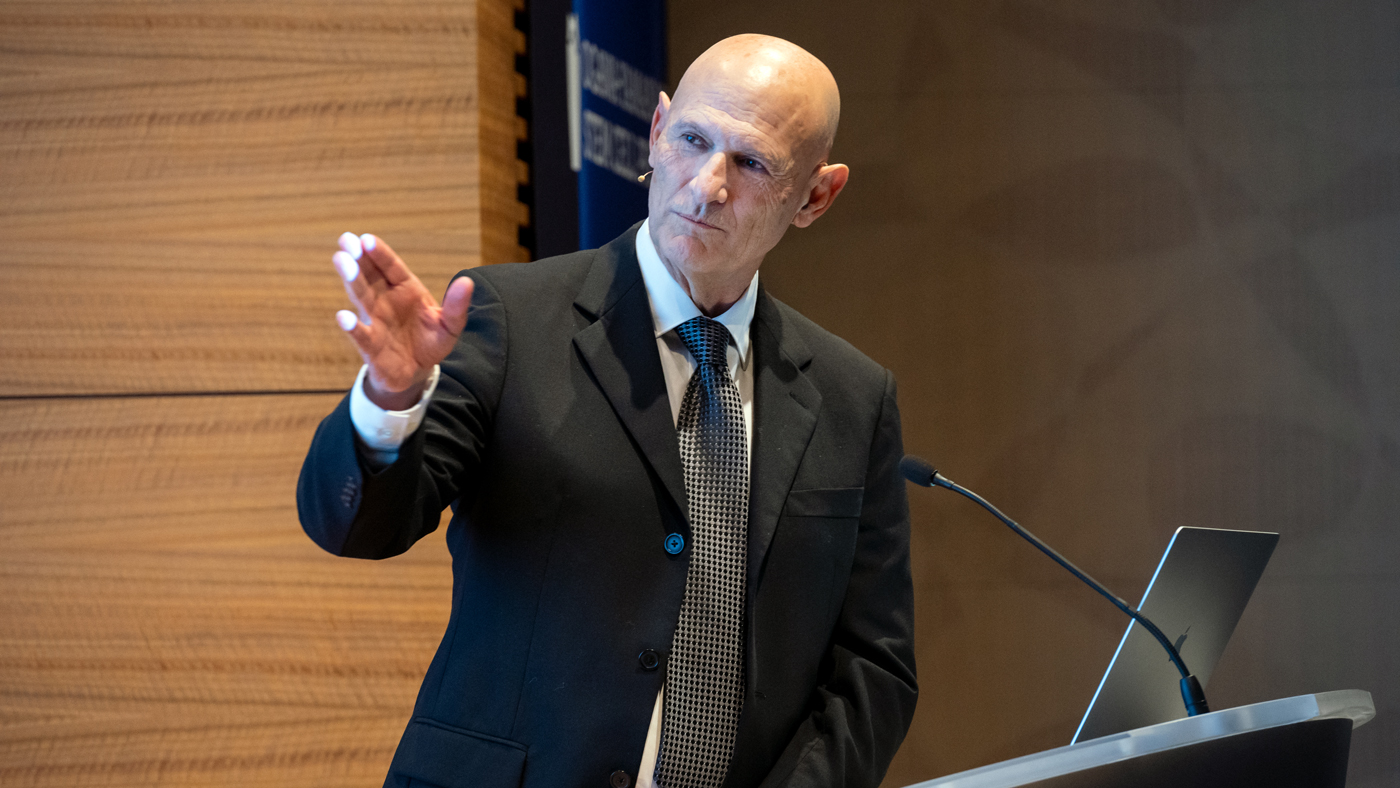
Izpisua Belmonte, who now leads the San Diego Institute of Science of Altos Labs, is working to identify strategies to reprogram cells to become younger, in hopes of eventually moving potential disease treatments into clinical testing.
In 2018, he was named one of TIME magazine’s “Top 50 Most Influential Leaders in Healthcare” after his team used iPS cells to grow human cells inside pig embryos—raising the possibility of growing human organs in other animals and using them for transplantation. He has also led efforts to create synthetic embryos.
“Using human embryos grown from egg and sperm for medical purposes raises serious ethical concerns,” says Izpisua Belmonte. “But what if we could take a single adult cell, reprogram it, and grow a synthetic embryo that could then be used for transplantation of cells, tissues, or organs?”
All of these efforts point toward disease treatments based on growing healthy cells outside the body and transplanting them into patients.
“I'm very convinced that this approach will help alleviate many, many diseases,” he says.
But in parallel, Izpisua Belmonte has also been applying Yamanaka’s discovery in an entirely different manner—one that would directly treat diseased cells inside the body, without the need for transplantation.
Reawakening Natural Regenerative Abilities
Some animals have the remarkable ability to recover from seemingly devastating injuries. Zebrafish can regrow their fins and their hearts. Some salamanders can regenerate an entire lens in their eyes.
“My favorite is the axolotl, it’s amazing,” says Izpisua Belmonte. “If it loses a limb, within about 3 weeks it will naturally grow a new, identical limb with the same blood vessels, the same nerves, the same number of fingers.”
Biology 101 students learn that mammals do not share these regenerative capabilities, which are known as endogenous repair. But Izpisua Belmonte notes that is not entirely true. As a mammalian embryo develops, it is capable of some regeneration. For instance, for the first few days after a mouse is born, it can regenerate a damaged kidney or a heart.
“I would say that the mechanism of endogenous repair is present in our bodies, but we lose it as we age,” he says. “By understanding how animals regenerate, I began to wonder, could we somehow bring similar repair processes to humans?”
“The hope is to bring cellular rejuvenation to the clinic, to bring human cells back to the functional fidelity they had earlier in life, so that they can better cope with disease.”
Many years earlier, Izpisua Belmonte’s team had found that, when a zebrafish loses its heart or an axolotl its limb, nearby cells naturally take a few steps back in time, transforming into an earlier cell stage but without turning all the way back into stem cells. The new body part then grows from these “rejuvenated” cells.
In contrast, Yamanaka’s method for engineering iPS cells uses four proteins, often called Yamanaka factors, that completely convert adult cells to an embryonic state.
“The ‘aha moment’ came when, in the lab, we wondered what would happen if we applied Yamanaka factors to mammalian cells in smaller doses for a short period,” says Izpisua Belmonte. “Could we bring cells just a little bit backward in time?”
So, his team tried just that, in mice with a mutation that makes them age rapidly. Instead of continuously supplying the four proteins, they gave them to the mice in short pulses.
“The result was incredible,” says Izpisua Belmonte. “The mice we treated lived 30 percent longer than untreated mice with the same mutation that caused rapid aging. They still had the mutation, but we had managed to make their cells a little more youthful, so that they could better cope with it.”
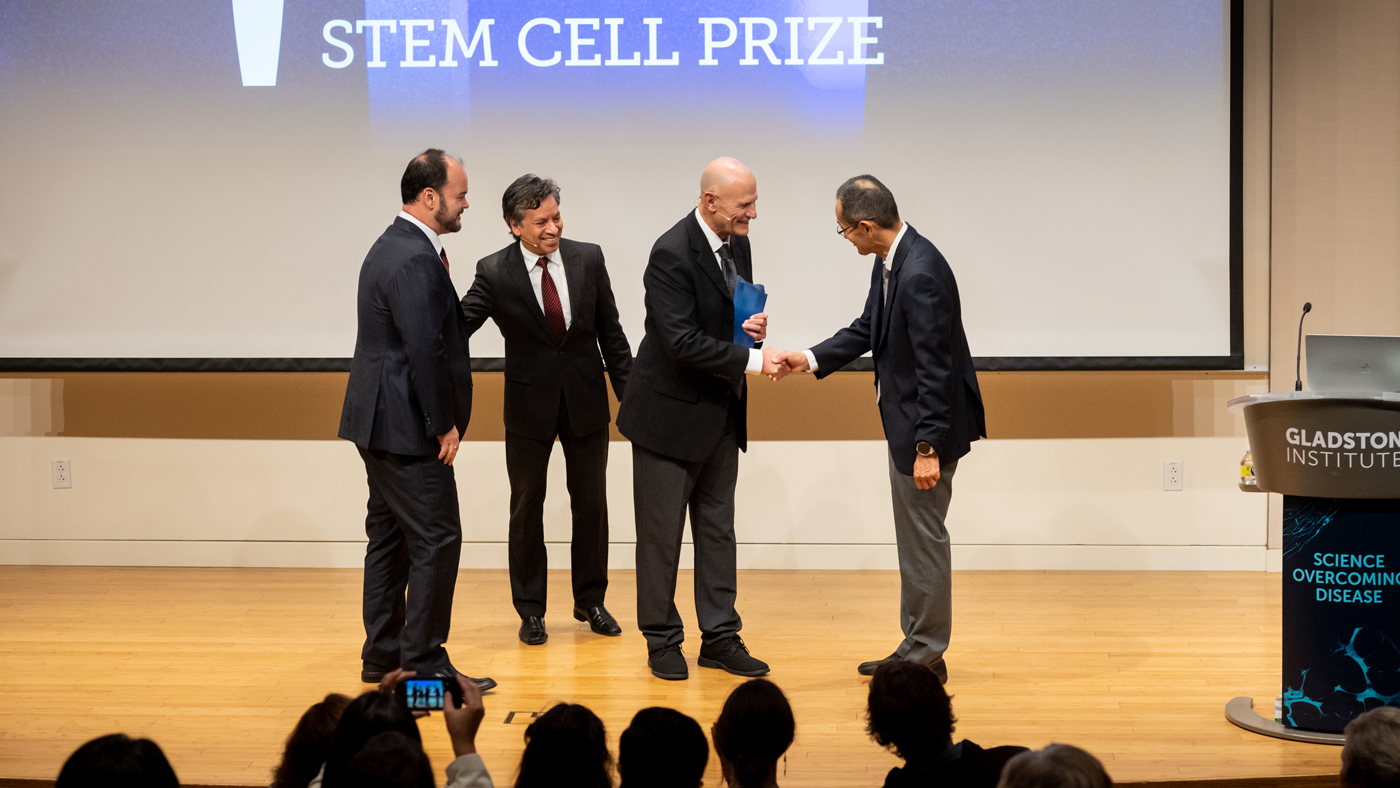
Izpisua Belmonte is presented with the 2022 Ogawa-Yamanaka Stem Cell Prize for his trailblazing research on cellular rejuvenation. From left to right: Andrew Ogawa (son of Betty and Hiro Ogawa), Deepak Srivastava, Juan Carlos Izpisua Belmonte, and Shinya Yamanaka.
This landmark 2016 discovery suggested the possibility that mammalian cells could be partially reprogramed just enough to stimulate endogenous repair and thereby reverse disease. Since then, Izpisua Belmonte has successfully applied the concept of partial reprogramming using Yamanaka factors to rejuvenate many types of cells and tissues in the lab.
His team has shown that partial reprogramming enables mice to survive high doses of acetaminophen (e.g., Tylenol) that would normally kill them by disrupting liver function. It also appears to aid regeneration of mouse muscles after injury. Further experiments suggest that short pulses of Yamanaka factors boost the metabolism of obese mice that overeat because of a particular mutation. And cellular rejuvenation is associated with improved organ function in mice with damaged kidneys, livers, or lungs.
“The hope is to bring cellular rejuvenation to the clinic, to bring human cells back to the functional fidelity they had earlier in life, so that they can better cope with disease,” says Izpisua Belmonte.
A Trailblazer of Regenerative Medicine
Earlier this year, Izpisua Belmonte closed his lab at Salk after nearly 30 years of discovery. But he is nowhere near finished. He now leads the San Diego Institute of Science of Altos Labs, a new life sciences company that aims to improve human health through cellular reprogramming.
“I am very excited to now be working with other scientists at Altos to keep advancing basic knowledge on cellular rejuvenation, while also figuring out how to translate it to the clinic,” he says.
Many big questions remain to be explored. What, exactly, is happening at the molecular level when Yamanaka factors rejuvenate a cell? And how closely does this process reflect natural regeneration in a zebrafish or salamander?
“By studying the molecular details of rejuvenation, we may improve the process and come up with multiple different strategies to reprogram cells to become younger, some of which may be more applicable to certain diseases than others,” says Izpisua Belmonte.
For now, Altos Labs is particularly focused on rejuvenating cells in the kidney, liver, brain, and skin. Ultimately, Izpisua Belmonte believes their work will extend to almost every type of cell in the body.
“We are starting with human cells in the lab, and if everything works as we expect, why not dream of beginning to move potential disease treatments into clinical testing in the future,” he says.
“This is probably the highest recognition I have received for my cellular rejuvenation research. I am a great admirer of Shinya’s work, and I am very proud to receive an award named in his honor.”
Reflecting on all that led him to this point, Izpisua Belmonte recalls a memorable interaction with Yamanaka many years ago, when both scientists had recently completed their postdoctoral studies and were attending the same conference in Japan.
“We were walking through a park and I shared my feelings of uncertainty about my career, now that I was no longer being taken care of by a mentor in a lab,” says Izpisua Belmonte. “Shinya, in his very humble way, told me he felt the same uncertainty, but said that if we work hard at what interests us, we will find a way to advance our field. That’s exactly what he did, and thanks to him, so did I.”
Izpisua Belmonte says it is difficult to describe just how meaningful it is to receive the Ogawa-Yamanaka Stem Cell Prize.
“This is probably the highest recognition I have received for my cellular rejuvenation research,” he says. “I am a great admirer of Shinya’s work, and I am very proud to receive an award named in his honor.”
When he thinks about what this award means to him, he also immediately thinks of his wife, Concepcion Rodriguez Esteban. The two have been working side by side at Salk for many years, and Rodriguez Esteban played a key role in the team’s discoveries.
“Discovering something new is a very difficult, very long process, but having someone next to you who not only supports you, but also contributes directly is the most anyone could dream of,” says Izpisua Belmonte.
“Looking forward, I simply hope that our work can contribute to expanding the field of rejuvenation, that rejuvenation could make a difference in many contexts across a variety of diseases,” he adds. “I could see this happening within my lifetime. That would be so incredible.”
Six Gladstone Scientists Named Among World’s Most Highly Cited Researchers
Six Gladstone Scientists Named Among World’s Most Highly Cited Researchers
The featured scientists include global leaders in gene editing, data science, and immunology.
Awards News Release Corces Lab Doudna Lab Marson Lab Pollard Lab Ye LabBringing Modern Science to Vitamin Biology: Isha Jain Wins NIH Transformative Research Award
Bringing Modern Science to Vitamin Biology: Isha Jain Wins NIH Transformative Research Award
Leveraging modern scientific tools and techniques, Jain intends to transform our understanding of the critical roles that vitamins play in health and disease.
Awards News Release Cardiovascular Disease Jain Lab MetabolismKaterina Akassoglou Receives Zenith Fellows Award to Advance Alzheimer’s Research
Katerina Akassoglou Receives Zenith Fellows Award to Advance Alzheimer’s Research
Akassoglou has opened doors to understanding how the blood protein fibrin is involved in Alzheimer’s and other neurodegenerative diseases.
Awards News Release Alzheimer’s Disease Center for Neurovascular Brain Immunology Akassoglou Lab


